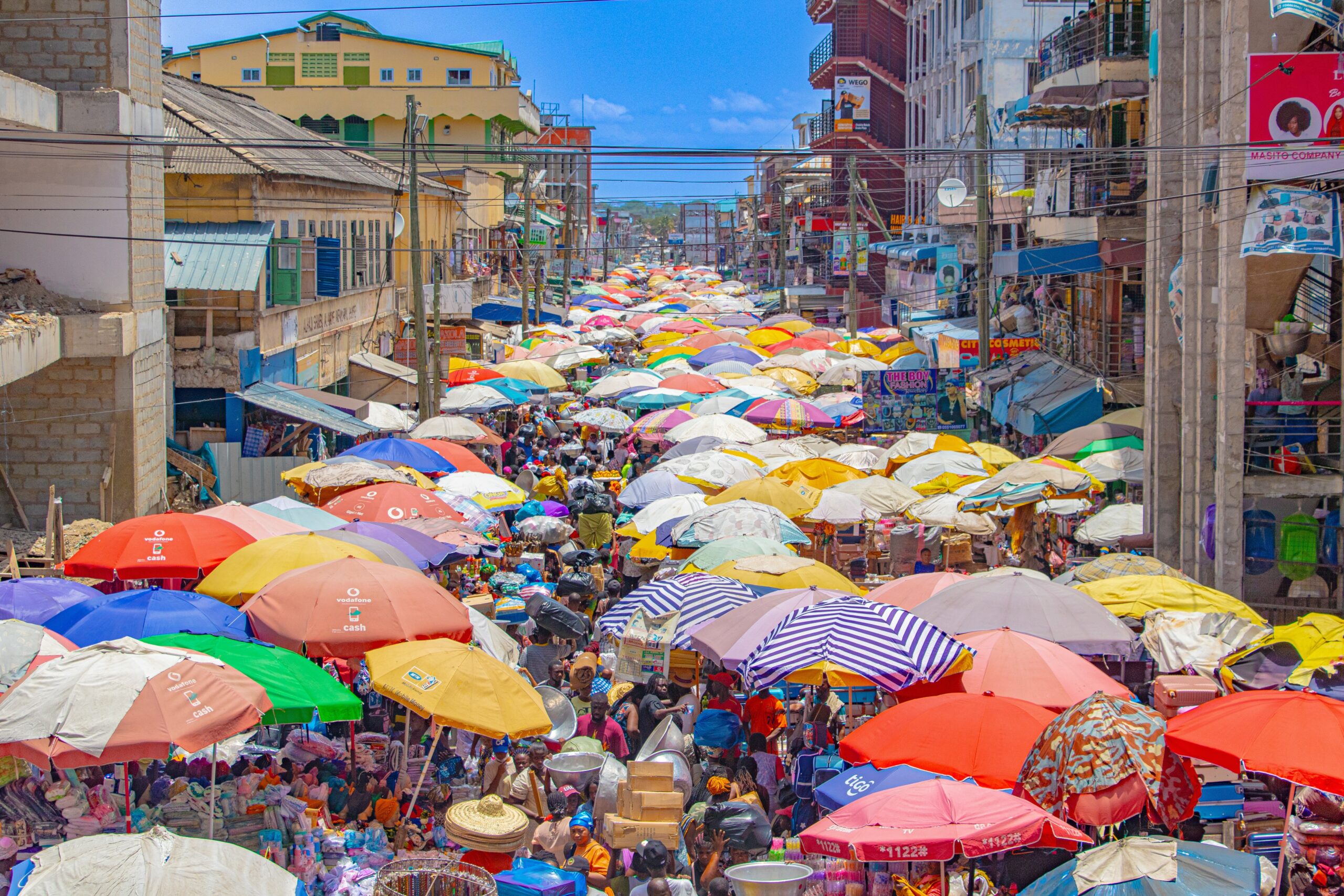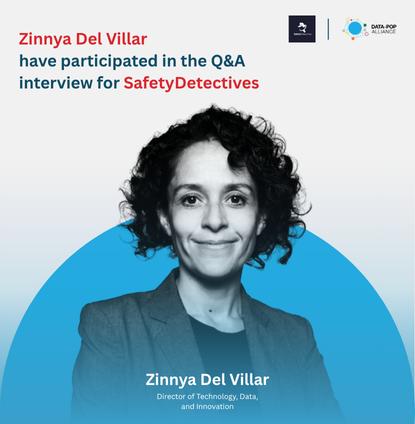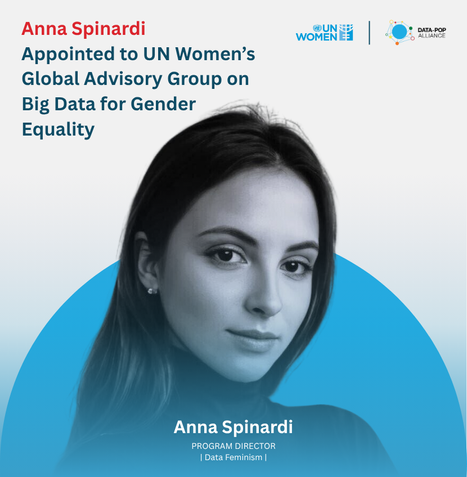DISCUSSION PIECE
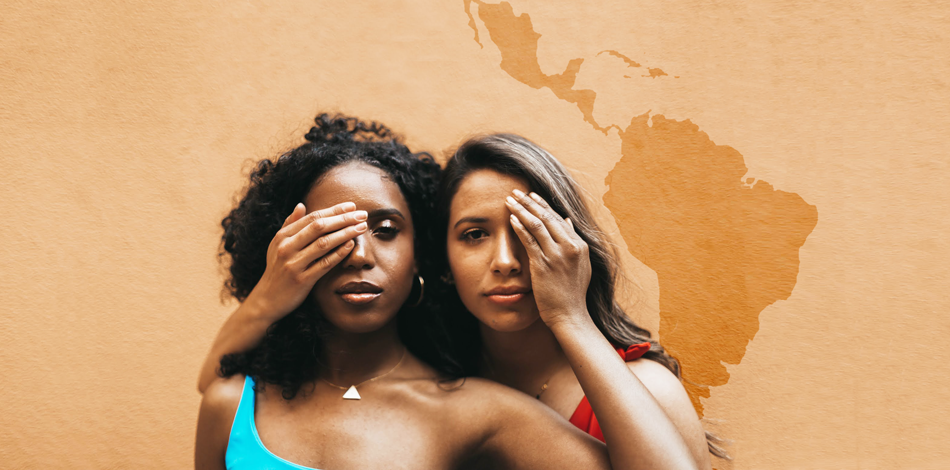
Photo: Analise Benevides. Edition: Paola Caile.
November 25 marks the International Day for the Elimination of Violence against Women, a date that serves as a global reminder of what it is now refered to as the “shadow pandemic” (UN Women, 2020). But how to tackle a problem which is widely veiled, avoided by the spotlights, and even normalized in some contexts? With a call to “Orange the World”, the United Nations launches a 16 days campaign of activism every year to inspire and prompt societies all over the world to put into action initiatives to build a better future free of violence for women and girls. In lieu of this important goal, and the work that Data-Pop Alliance and Unidas have been doing for the past six months across Latin America to fight gender-based violence, this piece looks in depth at the factors that drive this phenomenon, particularly within the context of the current pandemic.
Gender-based violence: a long-lasting crisis
Achieving the goal of ending violence against women and girls (VaWG) is far from concluded. According to UN Women (2013), around the world “35% of women and girls experience physical or sexual violence in their lifetime, most frequently by an intimate partner”. Moreover, around 137 women are killed every day by a family member, showing how the place that is supposed to be the safest for women is actually one of the most dangerous (UNODC, 2019). During the COVID-19 pandemic this situation has only become worse as women have been forced to spend more time with their aggressors due to stay-at-home and movement restriction measures. The increase in economic insecurity and other related factors further exacerbate their vulnerability to experiencing violence. This is especiallly true in Latin America, the region with the highest rate of sexual violence in the world (UNDP, 2017).
Source: UN Women BRIEF v 1.1. 23.04.2020
In Brazil, a country that has one of the highest rates of VaWG in the region, it was estimated that in 2017, 67% of the registered victims of physical aggression were women (Gênero e Número, 2019). In the case of Colombia, 86% of cases of sexual violence reported in 2019 were of women and girls, out of which 90% occurred in the context of the armed conflict. Following the global tendency, the prevalence of VaWG for both countries has been deeply impacted by the pandemic, causing an increase in reported cases in cities like São Paulo and Bogotá.
According to São Paulo’s Military Police, in March of 2020, when the official quarantine started, the number of calls reporting cases of domestic violence increased approximately 45% in comparison to the same period of last year (Fórum Brasileiro de Segurança Pública, 2020). In Bogotá, from the start of the lockdown period on March 20th up to the June 15th, registered calls to hotline services revealed an staggering increase of 187% in cases of domestic violence (Secretaría Distrital de la Mujer, 2020).
After the outbreak: What are we doing?
Due to this context Data-Pop Alliance joined forces with Unidas. Unidas is a network of women from Latin America, the Caribbean and Germany fighting for equal opportunities for women and men as part of the Latin America and Caribbean Initiative of the Federal Foreign Office. Both organizations work together to create an experimental risk model to map geographical areas in São Paulo and Bogotá in which women could be at an increased risk of experiencing domestic violence. The model uses an innovative approach that leverages traditional (e.g. official statistics) and non-traditional (e.g. mobility data) sources of data, first developed for the Mexican context and now applied to São Paulo and Bogotá. At the same time, we wanted to adopt a mixed-methods approach rather than one that was solely focused on statistical analysis. As a result, we conducted a thorough literature review on the risk factors which are considered to be triggers of VaWG in Latin America. Moreover, we conducted in-depth semi-structured interviews with key actors from the public sector, civil society organizations and academia. Their inputs served to both extend and validate our findings.
Insofar as the abundance of literature on the matter, it was necessary to use a model that would allow the visualisation of the diverse factors that prevail across different areas of action. For this reason, the ecological approach (Heise, 1998) was used as a roadmap for categorization, which provides a holistic perspective to understand the etymology of gender-based violence through an integrated, multifaceted process, referring to four categorical levels of analysis: personal, relational, community, and institutional. Furthermore, taking into account the current scenario of the COVID-19 pandemic, it was decided to identify those factors that emerged or were further aggravated by this health emergency, thus classified under a new category titled ‘COVID-19 related factors’. In addition, the factors that were navigating between each of the categorical spaces were characterized as both transversal and structural. The full model, the key outcome of our desk and field research, can be seen in detail below.
Source: Diagram prepared during the review of the literature (by the authors)
Although most factors were identified as part of a general literature review in the context of Latin America, for each of our specific case studies there was at least one factor that stood out, and which significance and existence was mostly pertinent to the national context.
Contextual risk factors
Bogotá: Armed conflict
In Bogotá, the armed conflict was one of the factors highly associated with the prevalence of VaWG and the one most uniquely linked to the historical context of the country. Although on November 24th, 2016 the Colombian government signed a peace agreement with the oldest and long-standing guerilla group, the FARC (Fuerzas Armadas Revolucionarias de Colombia), the country still struggles with many insurgency groups that challenge the peace process, reproducing violent behaviors and putting at risk the welfare of many people, particularly women.
The armed conflict in Colombia has been a catalyst for VaWG as it intensifies the hierarchical order in social relations and reinforces other power relations, such as those based on gender (Medina, Mosquera & Sinisterra, 2017). As a result of the armed conflict, women’s bodies have been instrumentalized to be used as territories of war in which they lose their agency and are transformed into dehumanized objects of men’s abuse and attacks (Andrade, 2016). This vulnerability that women experience is not only caused by insurgency groups, but also by the military forces and even the judicial institutions that many times re-victimize women when they search for help. Furthermore, some scholars have argued that violence and aggressiveness, which are boosted by warfare and armed conflicts, have had a spillover effect from the public into the private sphere (Wijkström & Hanlon 2003). On this issue, one of our interviewees stated:
São Paulo: Structural racism
In São Paulo, one of the key factors exacerbating VaWG is structural racism. Numerous studies have shown how women of color are at a more vulnerable position when it comes to VaWG because, on top of gendered oppressive social norms, they are also victims of structural arrangements that discriminate, marginalize and punish people of color in a variety of forms (Hampton, Oliver and Magarian, 2003; Waltermaurer, Watson and McNutt, 2006; Sokoloff and Dupont, 2005; Carrijo and Martins, 2020). According to the coordinator of the grassroot organization E agora, José?, which is located in Santo André (a neighbouring municipality to São Paulo):
Institutionalized racism draws back to the historical conditions in which Black women were enslaved, abused and sexually exploited by colonizers. The pejorative stereotypical representations of women of color known today as “aggressive, domineering, castrating, independent, sexually promiscuous, and money hungry” (Hampton, Oliver and Magarian 2003, p. 547), are intrinsically connected to the situation that the black community in general has been subjected to for centuries.
The exacerbation of the challenges faced by women of color range from factors related to disproportionate economic vulnerability to acute forms of racial oppression. Yet, the literature points out that some factors connected to the structural dimension of institutionalized racism deserve more attention. One of these factors was identified by authors as the “frustrated masculinity syndrome”, which is intrinsically connected with the interplay between oppressive structural forces, particularly those related to gender, race and class (Hampton, Oliver and Magarian, 2003). These forces portray Black men as hyphermasculine aggressive individuals, when in reality these are the same forces which further marginalize them, transforming Black men into one of the principal targets of a system that has killed and persecuted people of color for centuries (Nagel, 1998; Hampton, Oliver and Magarian, 2003). How researchers explain this syndrome is that men are raised from a very early age to associate manhood with success, employment, economic independence, and the ability to provide for one’s self and one’s family. However, Black men are historically excluded from access to the socioeconomic opportunities that have historically favored White men over every other individual. Authors suggest that one way in which low-income Black men may seek to cope with their lack of success in the pursuit of the traditional male role is through the adoption of violent behaviors as a means of resolving disputes. These patterns put women of color at a disproportionate risk of becoming victims of intimate-partner violence because men tend to displace their anger and frustration towards their wives and romantic partners. As stated by Staples (1978, p. 173), “violence as a means of status-conferral will continue to exist among black youths in the underclass as long as the opportunity structure for other expressions of their masculinity remain blocked by the forces of institutional racism.”
Additionally, Black women who live in communities that are more violent tend to be socially isolated due to the stigma that surrounds them for being black and poor (Crenshaw, 1991; Sokoloff and Dupont, 2005; Carrijo and Martins, 2020). This creates even greater barriers for Black women to report violence since they have limited access and social resources, and they risk being re-victimized by racist police and criminal justice systems. In Brazil, the presence of structural racism has disproportionately affected women of color, causing them to be more isolated due to the affective rejection permeated by socially imposed ideals as well as the prevalence of a withstanding position of being financially dependent on their partners (Carrijo and Martins, 2020). Yet, this last factor of financial dependence is not fully inherent to Black women, but is rather present at a more general level for Brazilian as well as Colombian women.
Highlighted factor: Lack of financial independence
The lack of financial independence has been one of the major factors exacerbating women’s risk of experiencing violence. The literature argues that the lack of economic opportunities or having an income of their own hampers women’s ability to leave abusive relationships and rather impel them to tolerate violent behavior for the fear of not being able to maintain themselves and their children (Adams, Sullivan, Bybee and Greeson, 2008). Farmer and Tiefenthaler (1997, p. 353) argue that “women are more likely to leave battering relationships if they have better economic opportunities outside the household.” Hence, the more a woman is financially dependent on her partner, the less bargaining power she has in the relationship and higher the risk of being battered or abused. As a councillor woman of the city of São Paulo stated in our interview:
Furthermore, women who lack economic independence have greater hardships in accessing public services, such as reporting violence at police stations or obtaining restraining orders. Regardless if some of these services are gratuitous, there are other costs that need to be considered, such as paid transportation to move from home to the competent authority.
Covid-19 factors: Social isolation and access to VaWG services
One of the key aspects of the project in which Data-Pop Alliance and Unidas are working together to map hotspots of domestic violence in Bogotá and São Paulo, is the focus on the impact that the COVID-19 pandemic has had on VaWG. For this reason, we also studied a set of COVID-19 related factors, of which social isolation and reduced access to services emerged as the primary conditions currently aggravating women’s vulnerability.
One of the first measures taken by governments worldwide after the outbreak of the COVID-19 pandemic was to restrict mobility and establish quarantines. Though the length and rigourness of these measures varied within different countries, confinement at home and the closure of services providing support to victims of domestic violence had severe consequences on women. In Colombia, the government established a very strict confinement period, which lasted almost 6 months and allowed for few mobility exceptions. In Brazil, there was no national approach to establish lockdowns equally in each state, but certain places, including São Paulo, instituted a quarantine from March to May. Under these social distancing measures, women became increasingly socially isolated, spending less time with their support network and more time with their aggressors (Peterman et al., 2020). Social isolation reduces women’s ability to access their support networks, which refers to close relationships who could potentially offer assistance. In that sense, a political advisor within the Socialism and Liberty Party from Brazil pointed out:
Furthermore, women face greater obstacles in accessing support services as these are often considered by governments as “non-essential” and thus, subject to the suspension or alteration of their functioning during lockdowns (Roesch, Gupta and García, 2020). This situation produces uncertainty for women who do not know where to go or how to seek help (Comisión Interamericana de Mujeres, 2020). The sub-secretary in charge of the “Strengthening of Capacities and Opportunities” office in Bogotá’s Secretariat of Women, spoke from her experience regarding this issue:
Domestic violence in Bogotá and São Paulo: preliminary results
Bogotá
Administrative records of domestic violence against women are usually collected by the Security, Health, Judicial and/or Women’s public offices. In Bogotá’s case, there are eight databases from six different sources that have allowed us to map the reported prevalence of domestic violence against women and girls: 1) Línea Púrpura; 2) Casas de Igualdad de Oportunidades; 3) Casas de Todas; 4) Duplas de Atención Psicosocial; 5) Policía Nacional – SIEDCO; and 6) Línea 155. Here we discuss the preliminary findings from two of these databases: Línea Púrpura and Policía Nacional.
1. Línea Púrpura
Línea Púrpura (Purple Line in English) is a 24-hour hotline available 365 days a year for women over 18 years of age who live in the municipality of Bogotá. This helpline was created in February 2015 by Bogotá’s Secretariat of Women and the Secretariat of Health with the aim of guaranteeing women a life free of violence. The service provides attention to cases related to: violence against women, both in the domestic and the public sphere; orientation of appropriate attention routes; support for femicide survivors or family members of the victims; information about the institutional support services regarding the human rights of women, and health-related information and orientation, with special emphasis on sexual and reproductive rights. Although the service is intended to help women experiencing violence, witnesses may also call to report an incident. The information made available for this project covers the calls registered every month for the year 2019, and the period from January to September during the year 2020.
Overall, calls to Línea Púrpura in 2020 skyrocketed. In fact, the number of calls to the helpline increased in the beginning of the lockdown (March 20th) and the same behavior has been maintained throughout the year.
Number of Calls by month to Línea Púrpura in 2019 (blue) and 2020 (orange), aggregated by week.
Bogotá is divided into 20 localidades (localities in English). In Colombia, a locality is an administrative division that structures the municipality and is responsible for offering its citizens the provision of certain services, such as the networks of public services, infrastructure and entertainment. Since the statistics analyzed from Línea Púrpura showed important differences in calls between 2020 and 2019, this data was aggregated both by localities and by year. Based on demographic information, these calls were expressed per 100,000 inhabitants (left panel below, columns 2 and 3). With these call values, the percentage increase between both years was calculated (column 4). In order to spatially evaluate these differences, a choropleth map was built at the locality level to visualize the percentage increases. This map shows the central zone of Bogotá as the region in which localities had the highest percentage increase in 2020. Calls in Teusaquillo, for instance, increased 192%, and in Los Mártires 189%. In third place, and to the southwest of Bogotá, is Ciudad Bolívar with an increase of 177%. Among these three localities, Los Mártires stands out for receiving the highest number of calls during 2020 (110 per 100,000 inhabitants).
Call increase in Bogotá localities between 2019 and 2020, prepared with data from Línea Púrpura.
2. Policía Nacional – SIEDCO
The databases provided by the Polícia Nacional (National Police in English) register the contraventions to the National Police Code for different types of crimes which are then extracted from the National Police’s main statistical information system called SIEDCO. The information is published by the Criminality Information Group on a monthly basis. The SIEDCO database contains all of the so-called “high impact crimes” in the country (theft, homicide, terrestrial piracy, terrorism, personal injuries, among others), but for the purpose of analyzing domestic violence against women and girls in Bogotá, we are specifically looking at the reports for “Sexual Offenses” and “Intrafamilial Violence”. The databases accessed for this project cover all the occurrences of these two crimes registered by the National Police from 2010 to 2020.
When performing the same analysis adopted for Línea Púrpura with the National Police database, an opposite trend can be observed. The number of complaints decreased in comparison to the same period of 2019. By contrasting this behavior with other available information from different countries, it is possible to interpret these results as the impossibility of women leaving the household and moving around to report a crime, as well as the reduction of attention services in police stations (IRC, 2020).
Reports registered in the police databases for “Intrafamilial Violence” in 2019 (blue) and 2020 (orange), aggregated by week.
São Paulo
In São Paulo’s case, databases accessed through the Law of Access to Information and bilateral agreements from four different sources will be used to identify the hotspots of domestic violence against women and girls: 1) Secretaria de Segurança Pública do Estado de São Paulo (Public Security Secretariat of São Paulo’s State in English); 2) Tribunal de Justiça de São Paulo (São Paulo’s Court of Justice in English); 3) Secretaria Municipal de Saúde (Secretariat of Municipal Health in English); and 4) Projeto Justiceiras (The Righteous Project in English). Here we present the preliminary findings from the Justiceiras Project database.
1. Projeto Justiceiras
This database was acquired through a memorandum of understanding between Data-Pop Alliance and the Prosecutor’s Office of São Paulo. The Justiceiras Project was created in 2020 from the joint efforts between the organizations Instituto Justiça de Saia, Instituto Nelson Willians and Instituto Bem Querer Mulher, and consists of a task force that offers legal, psychological, socio and medical assistance for women victims of domestic violence all over the country. The service is provided online through WhatsApp. The victim is responsible for completing an electronic form, before being directed to the professional and multidisciplinary team of volunteers. In May 2020, Rappi —a Latin American “SuperApp” which offers a broad range of products and services available for delivery— also joined forces in the Justiceiras Project, adding a “panic button” to its phone application. When triggered, it forwards the victim (or the person responsible for pressing the button) to the first-attention service. Data from the Justiceiras database is available from March 31st to September 16th 2020 (corresponding to week number 14 to 38 – see graph below).
Number of registered calls by Justiceiras Project, aggregated by week.
Following a similar pattern presented by Línea Púrpura, the evolution of records during 2020 reveals a spike in calls reporting domestic violence during the first weeks of the quarantine period, and a decrease when mobility restrictions began to be lifted by the Government of São Paulo, showing that at this point in time women gradually started to have more freedom to leave their households and report their abusers at police stations or to other competent bodies.
Conclusion and call to action
Violence against women and girls is a historical and serious issue that affects all women regardless of age, status and nationality. The prevalence of VaWG stalls women’s opportunities for a better future and hinders the development of just and equal societies, where all human beings have the same rights, are respected as well as protected by their peers and governments. The COVID-19 pandemic brings an increased challenge to an already critical issue, and it emphasizes the urgency for finding solutions to mitigate and eliminate this crisis. All sectors of society, including governments, civil society organizations, researchers and data scientists, must join forces to find the best ways to decrease women’s vulnerability and to provide quality support services for survivors. Women should be allowed to feel safe in their own homes, as well as empowered and free to develop their own lives’ projects without being harmed in any way (physically, psychologically, sexually and/or economically). Therefore, we should all continue working in our different areas, and collaborating with one another to create a better present and future for all women.
To read more about our pilot project in Mexico using the same approach to identify hotspots of domestic violence, click here.

Source: UN Women. To learn more about the agenda for the #16Days of activism campaign, click here.
References
- Adams, A. E., Sullivan, C. M., Bybee, D., & Greeson, M. R. (2008). “Development of the scale of economic abuse”. Violence against women, 14(5), 563-588.
- Andrade Salazar, J. A., Alvis Barranco, L., Jiménez Ruiz, L. K., Redondo Marín, M. P., & Rodríguez González, L. (2017). “La vulnerabilidad de la mujer en la guerra y su papel en el posconflicto”. El Ágora USB, 17(1), 290-308.
- Defensoria del Pueblo, C. D. (2016). “Promoción y monitoreo de los derechos sexuales y reproductivos de mujeres víctimas de desplazamiento forzado con énfasis en violencias intrafamiliar y sexual”. Organización Internacional para las Migraciones (OIM-Misión Colombia).
- Carrijo, C., & Martins, P. A. (2020). “Domestic Violence and Racism against Black Women” Estudos Feministas, 28(2).
- Comisión Interamericana de Mujeres (2020). “COVID-19 en la vida de las mujeres: Razones para incluir los impactos diferenciados”. Comisión Interamericana de Mujeres. Available at <https://www.oas.org/es/cim/docs/ArgumentarioCOVID19-ES.pdf> (Consulted on 24/11/2020)
- Crenshaw, K. (1990). “Mapping the margins: Intersectionality, identity politics, and violence against women of color”. Stan. L. Rev., 43, 1241.
- Farmer, A., & Tiefenthaler, J. (1997). “An economic analysis of domestic violence”. Review of social Economy, 55(3), 337-358.
- Fórum Brasileiro de Segurança Pública (2020). “[Nota Técnica] Violência doméstica durante a pandemia de COVID-19, 16 de Abril de 2020”. [Online]. Available at: <https://forumseguranca.org.br/wp-content/uploads/2018/05/violencia-domestica-covid-19-v3.pdf>(Consulted on: 23/11/2020)
- Gênero e Número. (2019). “Mapa da Violência de Gênero: Mulheres são quase 67% das vítimas de agressão física no Brasil”. [Online]. Available at: <http://www.generonumero.media/mapa-da-violencia-de-genero-mulheres-67-agressaofisica/#:~:text=No%20ano%20de%202017,
agress%C3%A3o%20f%C3%ADsica%20registradas%20no%20pa%C3%ADs>(Consulted on: 24/11/2020) - Hampton, R., Oliver, W., & Magarian, L. (2003). “Domestic violence in the African American community: An analysis of social and structural factors”. Violence against women, 9(5), 533-557.
- Harding, E. (1992). “Violence Against Women In Colombia”. UNM Digital Repository
- Heise, L. (1998) “Violence against women: An integrated, ecological framework”. Violence against women, 4(3), 262-290.
- Medina Diuza, D. L., Mosquera, E. K., & Sinisterra Flórez, S. P. (2017). Factores de riesgo que inciden en el feminicidio y las consecuencias que se evidencian en las familias.
- Peterman, A., Potts, A., O’Donnell, M., Thompson, K., Shah, N., Oertelt-Prigione, S., & van Gelder, N. (2020). “Pandemics and violence against women and children”. Center for Global Development working paper, 528.
- Roesch, E., Amin, A., Gupta, J., & García-Moreno, C. (2020). “Violence against women during covid-19 pandemic restrictions.”
- Secretaría Distrital de la Mujer (2020). “Reporte atenciones.” [Online]. Available at: <http://omeg.sdmujer.gov.co/phocadownload/2020/mediciones/
linea%20purpura%20Reporte%20Atenciones.pdf>(Consulted on: 30/11/2020) - Sisma Mujeres (2020). “Comportamiento de las violencias contra las mujeres en el Marco de la pandemia COVID-19 en Colombia” Boletín 20 Sisma Mujeres. Available at: <https://www.sismamujer.org/wp-content/uploads/2019/07/Bolet%C3%ADn-Sisma-Mujer-COVID-19-y-DH-de-las-mujeres-en-Colombia.pdf> (Consulted on: 24/11/20)
- Sokoloff, N. J., & Dupont, I. (2005). “Domestic violence at the intersections of race, class, and gender: Challenges and contributions to understanding violence against marginalized women in diverse communities”. Violence against women, 11(1), 38-64.
- Waltermaurer, E., Watson, C. A., & McNutt, L. A. (2006). “Black women’s health: The effect of perceived racism and intimate partner violence”. Violence Against Women, 12(12), 1214-1222.
- UN Women. (2020). “The Shadow Pandemic: Violence against women during COVID-19”. UN Women. Available at: <https://www.unwomen.org/en/news/in-focus/in-focus-Gender-equality-in-covid-19-response/violence-against-women-during-covid-19> (Consulted on 30/11/2020)
- UNDEP (2017). “Policies to end Violence against Women in Latin America and the Crribbean”. UNDP. Available at: <Policies to End Violence Against Women in Latin … – UNDPwww.undp.org › dam › rblac › docs> (Consulted on 24/11/2020)
- UNODC (2018). “Global Study on Homicide: Gender-related killings of women and girls.” UNODC. Available at <https://www.unodc.org/documents/data-and-analysis/GSH2018/GSH18_Gender-related_killing_of_women_and_girls.pdf> (Consulted on 24/11/2020)

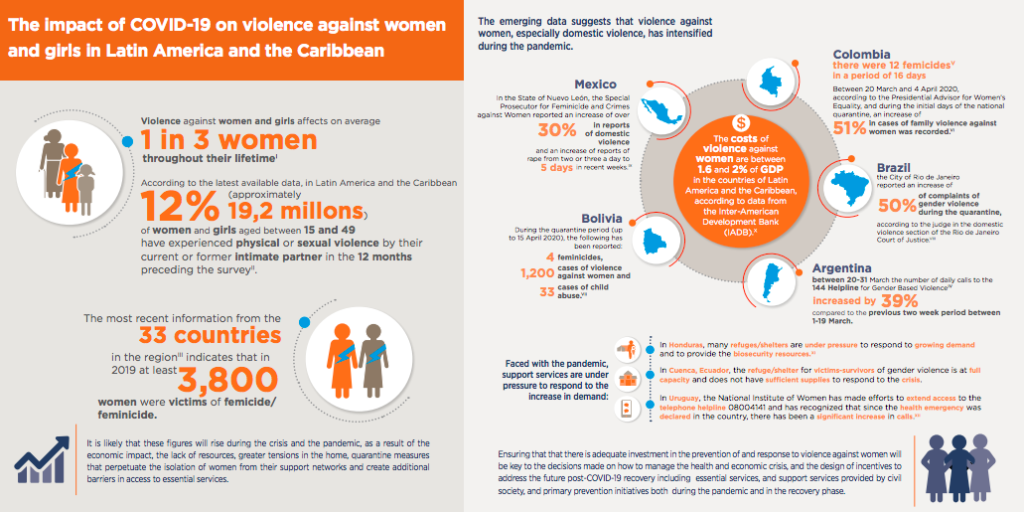
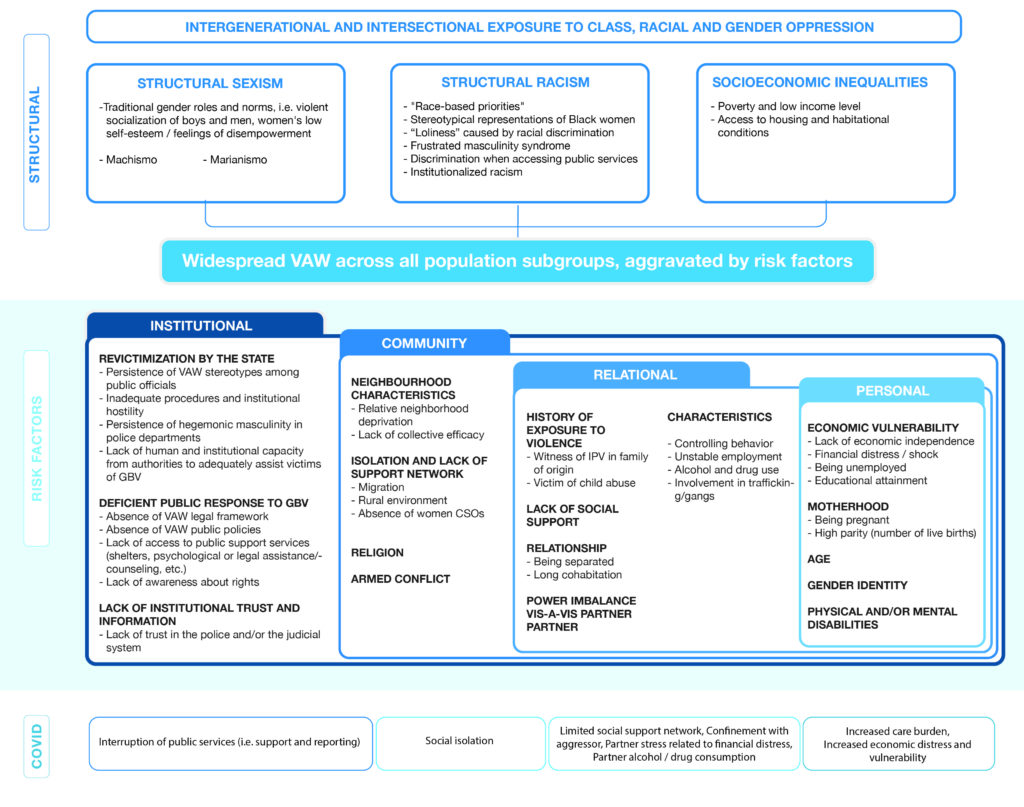
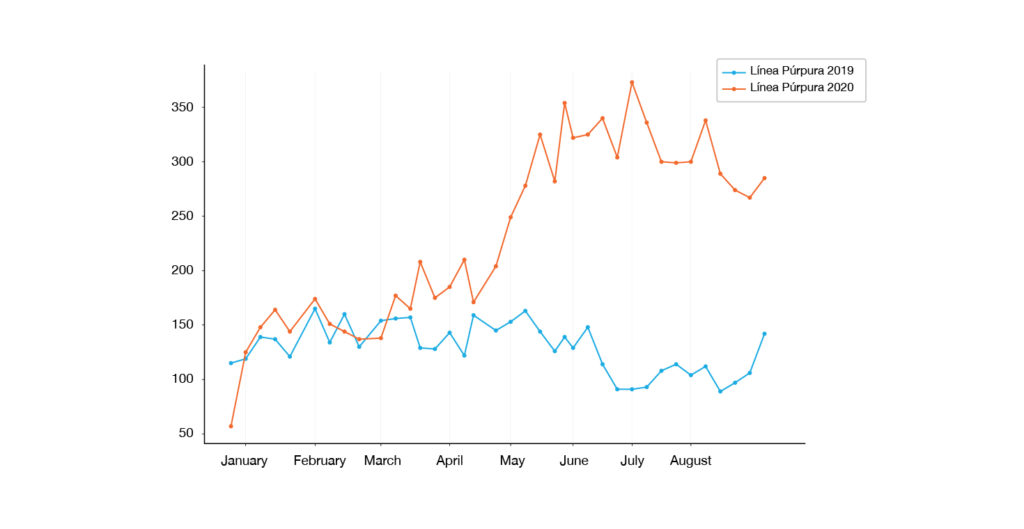
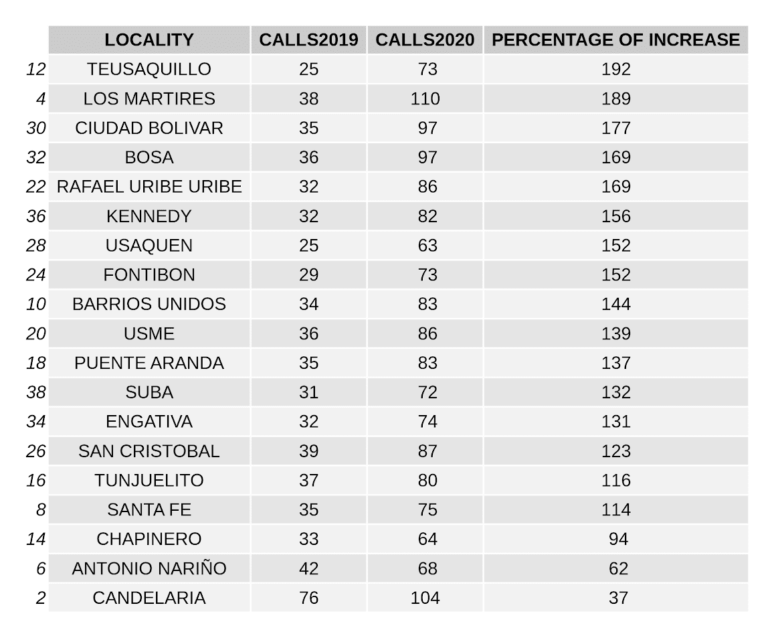
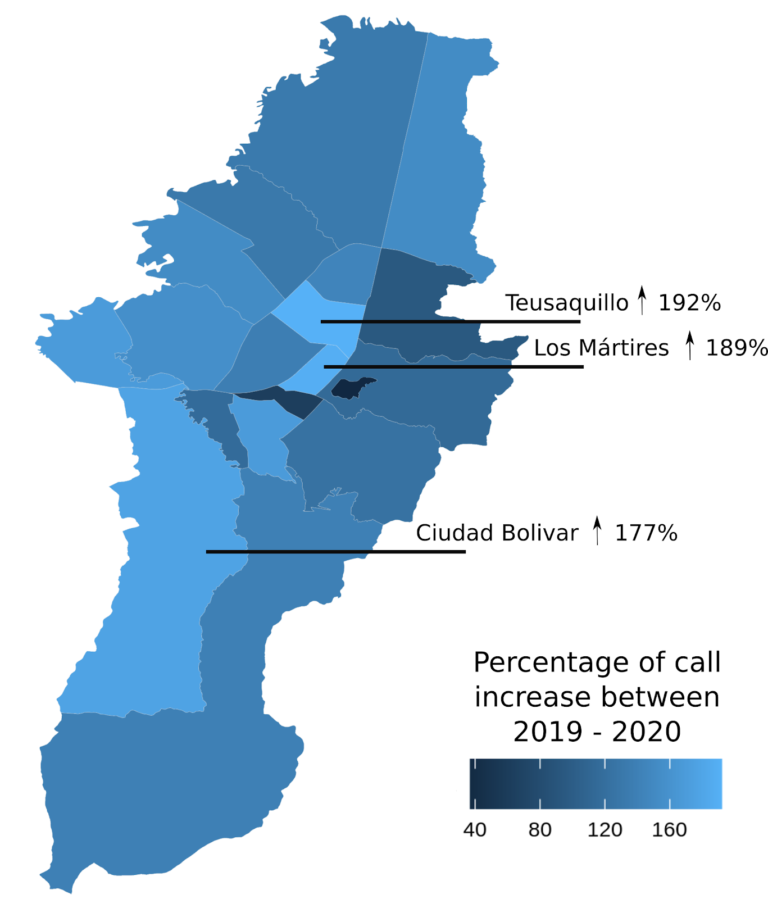
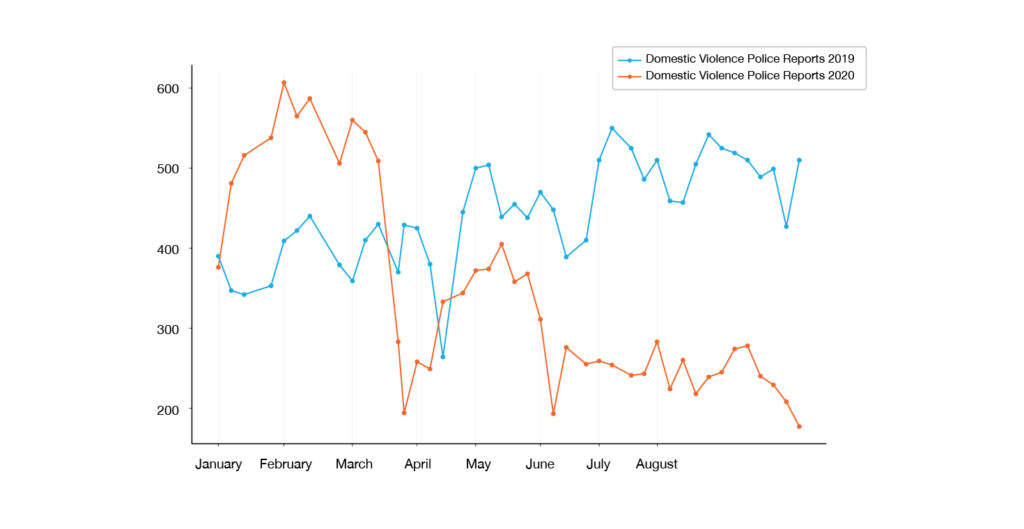

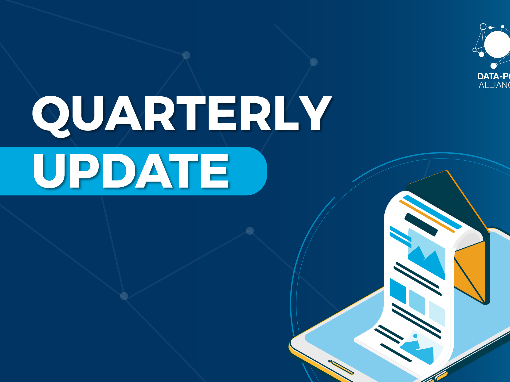
![M002 - Feature Blog Post [WEB]](https://datapopalliance.org/wp-content/uploads/2025/10/M002-Feature-Blog-Post-WEB.png)



